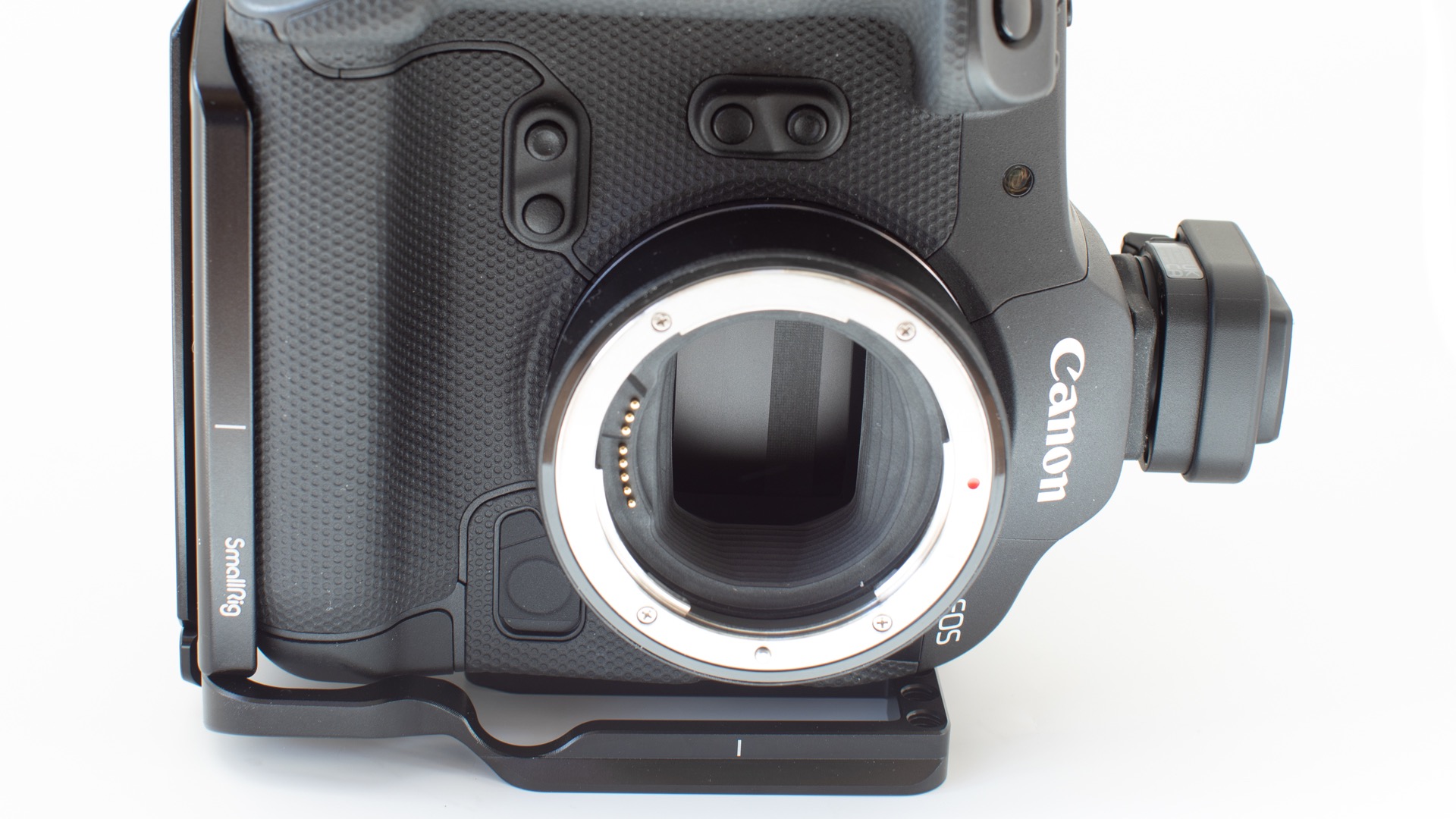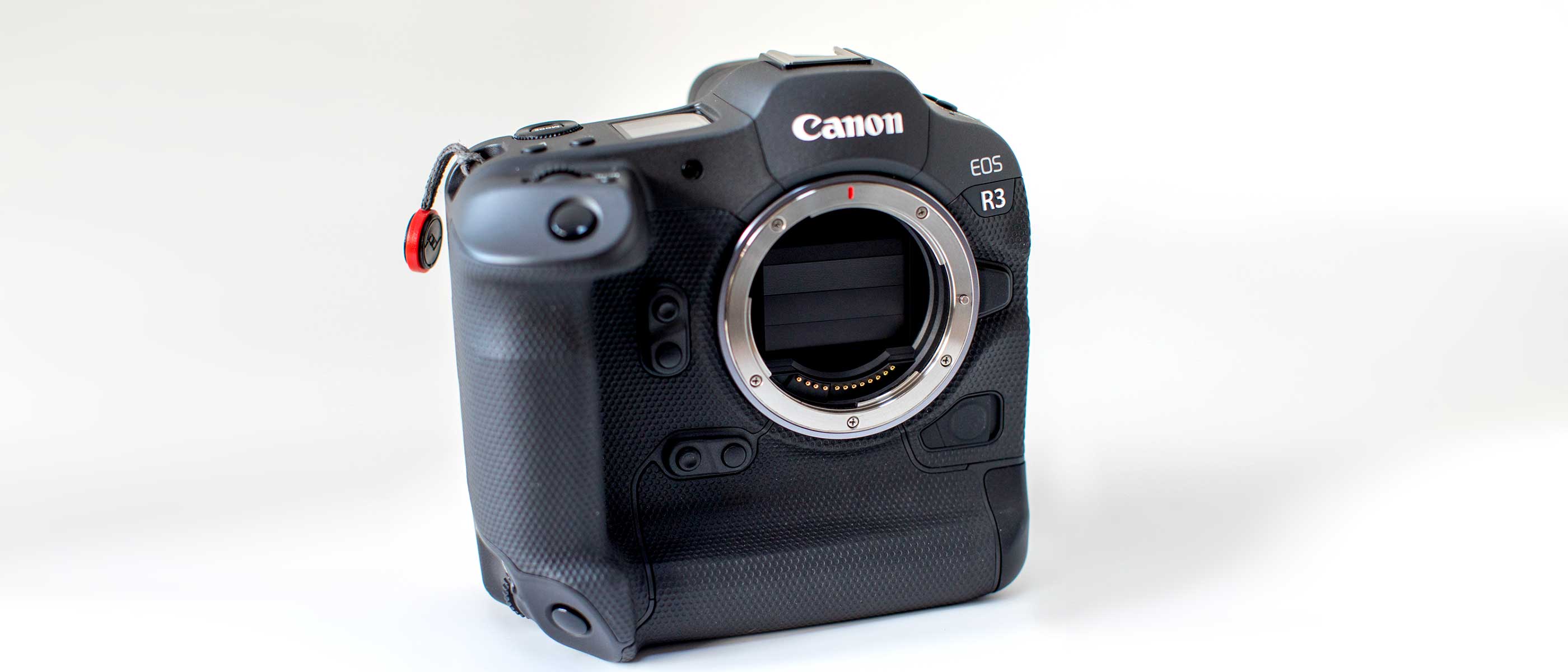Space Verdict
The Canon EOS R3 is a highly capable, customizable and creative camera that provides a versatile set of options to the serious photographer. In short, it frees the photographer to apply the art and science of photography to create professional images.
Pros
- +
Excellent Autofocus System
- +
30FPS burst speed with no buffering issues
- +
Shutter Speeds up to 1/64000 sec
Cons
- -
24MP stills might be low for some
- -
It certainly isn't cheap
- -
Weather sealing requires hot shoe cover
Why you can trust Space.com
We've been using the Canon EOS R3 camera every day since late December 2021. It is a high-quality hybrid mirrorless camera, meaning that it produces professional-quality photographs and video. We primarily use this camera for stills photography however the R3's video capabilities are first class and the autofocus system far exceeds our original expectations. The eye control autofocus feature is a game-changer, especially for action shots of people, sports and wildlife photography.
The Canon R3 comes with a hefty price tag so unless you've got cash to splash, you may want to consider an alternative from our best mirrorless cameras guide. Not sure if you want mirrorless or DSLR? We've got you covered with our guide to the best cameras for photos and videos and to help you choose between the two there's even the age-old debate of DSLR vs Mirrorless cameras for Astrophotography. In the meantime though, read on to find out what we thought of the Canon EOS R3.
Canon EOS R3 review: Design
- Lightweight, solid, weather-sealed body
- Fully articulated, 3.2-inch, 4,200,000-dot touch screen
- Highly customizable buttons and dials

The R3 feels good in the hand. Its built-in horizontal and vertical grips with duplicated controls which means switching between portrait and landscape orientation shots is very easy. The design allows for a high-capacity rechargeable Li-ion battery (LP-E19) and the buttons and dials on the back, top and front of the camera are easy to reach — most of them customizable. The key buttons can be back-illuminated for nighttime use.
The multipurpose, large viewfinder incorporates eye control autofocus technology. Some people have reported difficulty with the eye focus calibration process but for us, as spectacle wearers, the eye control calibration process (accessible via the easy-to-use menu system) works very well.
The EVF is used best in conjunction with the electronic shutter because what you see is what you get, there isn't any lag, and there's no blackout while capturing the shots. At high frame rates, we can concentrate on following the subject and capturing the action.

The flip-out touch screen at the back of the camera is fully articulated and very clear, detailed and versatile. It can be used to quickly change the main settings quickly, access specific menu items and of course, review photographs and videos. The smartphone-like features of using the screen including pinch to zoom in and out whilst reviewing photos, swiping, and touch selections of menu items speed up the operation of the camera and make it feel very familiar.
Out of the box, the Canon EOS R3 works well. However, the different needs of different photographers mean that a one size fits all configuration is not appropriate. There are a lot of buttons and dials on the camera that are configurable to the photographer's preference. For example, back button focusing, selecting focus areas, switching metering modes, cycling through functional options and other at-your-fingertips requirements can easily be assigned using the camera’s menu system.
Breaking space news, the latest updates on rocket launches, skywatching events and more!
Canon EOS R3 review: Functionality
- A versatile range of functions
- 6K, RAW video with unlimited recording
- Stacked, back-illuminated sensor

Autofocusing functionality of the R3 has AI-derived features to track subjects. Specifically, animals, cars and people. The eye-detection autofocusing function makes subject selection faster than other manual methods.
Video functionality of the R3 is a big topic in itself. It is important to note that issues found in some mirrorless cameras such as overheating, thirty-minute max recording time and lack of RAW recording are all resolved by the R3. This camera is not primarily a video camera but has excellent capabilities shooting RAW in full HD, 4K, 6K RAW, with 12-bit depth. Depending on which mode is selected, the video frame rates range from 24, 30, 50, 60 to 120 FPS.

The new sensor in the R3 brings several functional advantages to the camera. These include speed, improved color depth and 15 stops of dynamic range, excellent low light focusing and ISO performance, no banding and no rolling shutter. All this as well as lossless RAW recording.
Canon EOS R3 review: Performance
- Accurate and very speedy autofocusing
- The wide dynamic range works well alongside great high ISO performance
- Fast shutter speeds (up to 1/64000 of a second)

The accuracy and speed of the autofocus system is stunning. It is difficult to describe in words. Imagine looking at a moving subject, immediately focusing upon specific details (such as the eye of an animal), tracking it while following your subject with your camera, at the same time as capturing thirty frames per second without having to worry about filling the camera’s buffer!
The dynamic range and high ISO performance, compared to what a DSLR user would be accustomed to, would make for a revelatory experience. We deliberately over-exposed and under-exposed RAW photographs to see how much detail could later be recovered from highlights and shadows. We were delighted with the results.

We decided to try setting the camera to a fixed aperture and shutter speed and let the camera adjust exposure using AUTO ISO. We wouldn't usually do this because often, anything above ISO 6400 would mean that photographs would start to look noisy. This is not the case with the R3, where we were happy pushing much higher ISO levels than that.
The wide range of shutter speeds (up to 1/64000 of a second) is significant. For example, using a shallow depth of field to photograph a subject on a bright sunny day (without an ND filter or similar) requires a high shutter speed to avoid producing an over-exposed photo. We tested this using the following settings; f/1.2, ISO 100, and a shutter speed of 1/64000 whilst pointing the R3 at a very bright subject. The resulting shot won't win any awards but is evidence that the high shutter speed will be useful in such bright situations.


Canon AD-E1 Multi-function Shoe Adapter
L Bracket by Small Rig
Spare battery type: LP-E19
Memory card: Sandisk 256GB CFExpress (read 1700 MB/s, write 1200 MB/s), Lexar Professional 128GB SDXC V60 II 1667x (250MB/s)
For this review, we tested the camera alongside Canon EF L-Series lenses (using a Canon EF-EOS R Mount Adapter) as this is likely what someone stepping across from a Canon DSLR to a Canon mirrorless camera would have in their existing kit bag. We tested everything from macro lenses to telephotos. In our opinion, these lenses performed significantly better on the R3 than they do on Canon DSLRs.
We also tested three accessories with the R3. The Canon AD-E1 Multi-function Shoe Adapter. This essentially creates a traditional hot shoe mount thus enabling the use of flashguns and wireless triggers without compromising the camera's weather sealing.
We would also recommend the L-bracket designed for the R3 by Small Rig which is very useful for photographers who use their tripod for landscape, macro and portrait photography. A helpful feature of this L-bracket is being able to easily remove and replace the battery.
The R3 uses the Canon LP-E19 Battery, a high capacity, tried and tested battery used in Canon’s flagship DSLR camera. You could be forgiven for thinking this camera would burn through batteries like other mirrorless bodies, but we are yet to fully discharge a battery while using the R3 for an extended period of stills photography.
The Canon EOS R3 has dual card slots. One supports the superfast CFexpress type B memory and the other is for SD/SDHC/SDXC and UHS-II. The camera can helpfully record to both cards simultaneously in several file formats so you can worry less about losing important shots. Alternatively, one can be used solely for video whilst the other is used for stills. It’s also possible to start recording on one card and when that is full, automatically switch to the other.
Should you buy the Canon EOS R3?
The decision to buy or not to buy the R3 is yours. If you're looking to move away from DSLR bodies, and have the budget to do so, we think an R3 purchase is a leap worth taking. The R3 is solidly made, extremely capable and of very high quality. While there's no doubt it's a quality camera, it is squarely aimed at a professional demographic as is reflected in its feature-rich toolset and premium price. We were impressed with this camera but beginners and even intermediates may want to save their money for simpler, less expensive models.
If this product isn't for you
Beginners in photography or people who want to try something other than a phone to make photographs might find the Canon EOS R3 a confusing, daunting, and not to mention, a very expensive prospect. They could be better off buying the best DSLR or mirrorless camera they can comfortably afford (with manual aperture, shutter and ISO controls). Investing in a Canon RP would be a much cheaper choice and still boasts a solid full-frame Dual Pixel CMOS sensor, -5EV autofocusing (great for low light) and 26.2 megapixel stills photography. Beginners interested in astrophotography might prefer the Canon EOS Ra camera — another full-frame mirrorless but with specialist astro features like a modified IR sensor and maximum ISO 40,000!
However, if you're looking for something a little more hybridized to shoot video and stills photos, check out our review for the Canon EOS R6. It's more budget-friendly but packs in a lot of high-level functionality into a small body.

